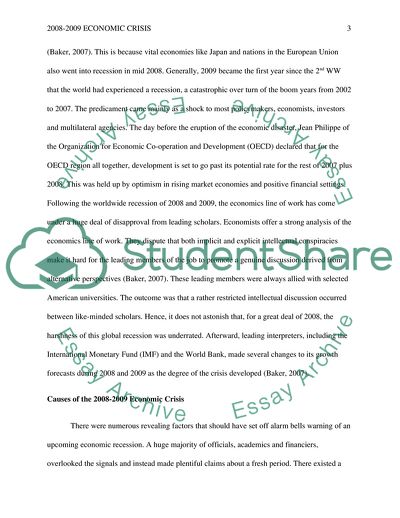Cite this document
(2008-2009 Economic Crisis Essay Example | Topics and Well Written Essays - 2000 words, n.d.)
2008-2009 Economic Crisis Essay Example | Topics and Well Written Essays - 2000 words. https://studentshare.org/finance-accounting/1774811-2008-2009-economic-crisis-and-the-policies-implemented-by-key-actors-responsible-for-rescuing-the-us-economy
2008-2009 Economic Crisis Essay Example | Topics and Well Written Essays - 2000 words. https://studentshare.org/finance-accounting/1774811-2008-2009-economic-crisis-and-the-policies-implemented-by-key-actors-responsible-for-rescuing-the-us-economy
(2008-2009 Economic Crisis Essay Example | Topics and Well Written Essays - 2000 Words)
2008-2009 Economic Crisis Essay Example | Topics and Well Written Essays - 2000 Words. https://studentshare.org/finance-accounting/1774811-2008-2009-economic-crisis-and-the-policies-implemented-by-key-actors-responsible-for-rescuing-the-us-economy.
2008-2009 Economic Crisis Essay Example | Topics and Well Written Essays - 2000 Words. https://studentshare.org/finance-accounting/1774811-2008-2009-economic-crisis-and-the-policies-implemented-by-key-actors-responsible-for-rescuing-the-us-economy.
“2008-2009 Economic Crisis Essay Example | Topics and Well Written Essays - 2000 Words”. https://studentshare.org/finance-accounting/1774811-2008-2009-economic-crisis-and-the-policies-implemented-by-key-actors-responsible-for-rescuing-the-us-economy.


